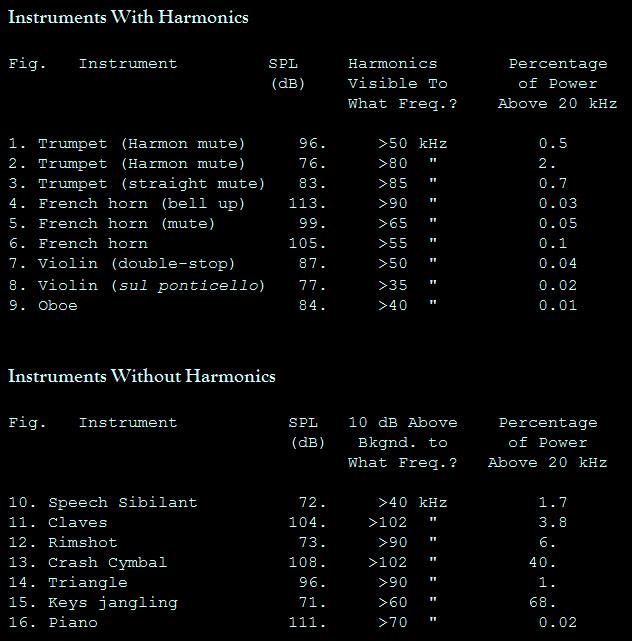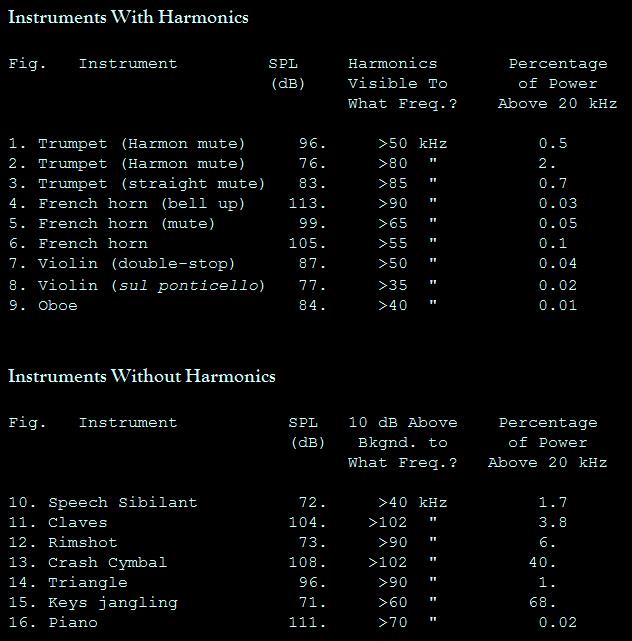Example 1
The frequency of 100Hz, amplitude 1V, gain 20dB, gain without feedback 80dB, output voltage 10V, Vdif 100μV,
phase 0 °
arcsin (Vdif / U(a)
arcsin = 0.00001 = 0,0005,73 °
Power 4Ω 25W, about 0.00005% THD
The frequency of 100kHz, 1V amplitude, gain 19 dB, output voltage 9V, gain without feedback 39 dB, Vdif 100mV,
Phase 5.74 °
arcsin (Vdif / U(a)
arcsin 0.1 = 5.74 °
Power 4Ω 20W, about 0.005% THD
Example 2
Acoustic signal 100Hz + 1 period 100kHz
Peak, rising edge, falling edge, always different.
Amplifier suppresses 100kHz -1dB, Vdif large 100mV, input transistors in the non-linear, the emergence of mutual modulation of signals. Distortion is non-periodic, distortion is heard, how much bias?
Distortion is generated by rapid changes. Distortion is not measured at a constant signal. The human ear hears what does not belong there.
The frequency of 100Hz, amplitude 1V, gain 20dB, gain without feedback 80dB, output voltage 10V, Vdif 100μV,
phase 0 °
arcsin (Vdif / U(a)
arcsin = 0.00001 = 0,0005,73 °
Power 4Ω 25W, about 0.00005% THD
The frequency of 100kHz, 1V amplitude, gain 19 dB, output voltage 9V, gain without feedback 39 dB, Vdif 100mV,
Phase 5.74 °
arcsin (Vdif / U(a)
arcsin 0.1 = 5.74 °
Power 4Ω 20W, about 0.005% THD
Example 2
Acoustic signal 100Hz + 1 period 100kHz
Peak, rising edge, falling edge, always different.
Amplifier suppresses 100kHz -1dB, Vdif large 100mV, input transistors in the non-linear, the emergence of mutual modulation of signals. Distortion is non-periodic, distortion is heard, how much bias?
Distortion is generated by rapid changes. Distortion is not measured at a constant signal. The human ear hears what does not belong there.
have you some music that have some 100KHZ component mixed
with the classical 20/20KHZ range?...NEVER an amp will encounter this
situation, and if it s the case, then something is wrong in your
signal sources...
with the classical 20/20KHZ range?...NEVER an amp will encounter this
situation, and if it s the case, then something is wrong in your
signal sources...
we know about this, the thing is that no recording include these
high frequencies..
well rather than music, i should have said "recording", as in fact, you re
stretching the words meanings..
do you need an amplifier when you listen to a live classical music concert, in situ ?...
Same impact on the bias.
The frequency of 100kHz, 200mV amplitude, gain 14 dB, output voltage 1V, gain without feedback 20 dB, Vdif 100mV,
Phase 30°
arcsin (Vdif / U(a)
arcsin 0.5 = 30°
Power 4Ω 250mW, about 0.005% THD
Just 250mW, Vdif 100mV, only 1 / 6 of profit, high shape distortion, mutual modulation.
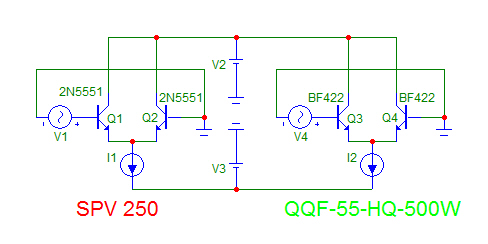
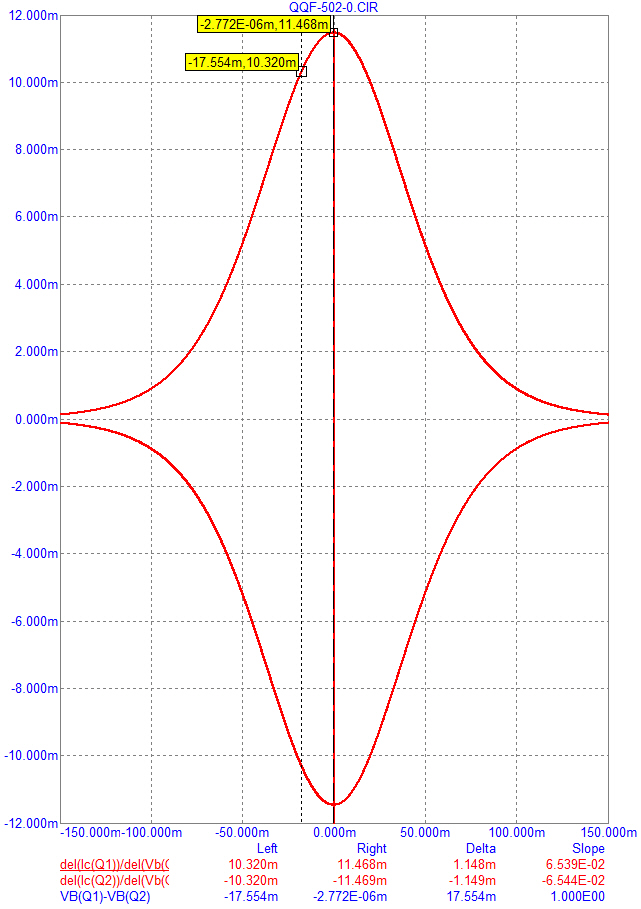
here
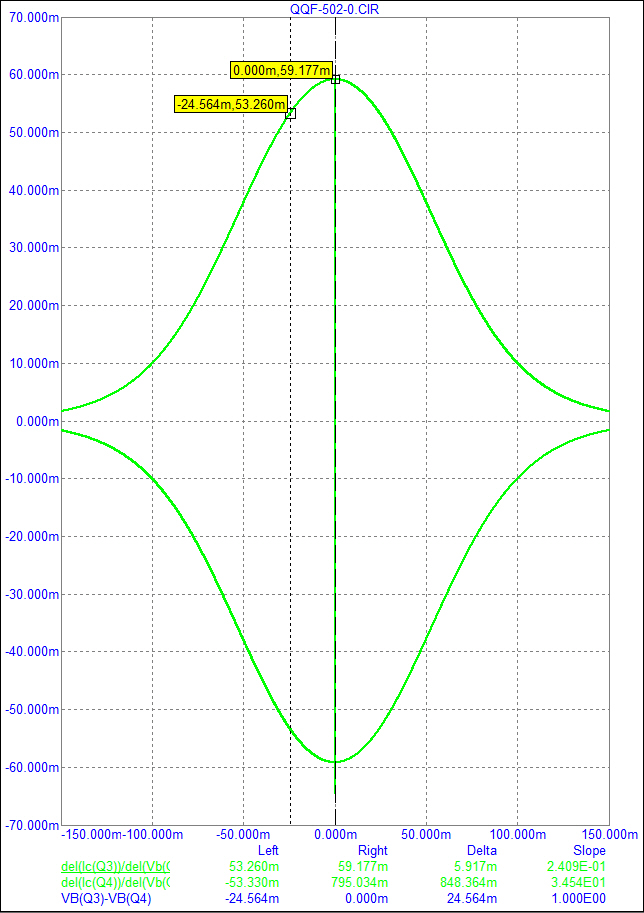
Even just 16mW
The frequency of 100kHz, 50mV amplitude, gain 14 dB, output voltage 250mV, gain without feedback 20 dB, Vdif 25mV,
Phase 30°
arcsin (Vdif / U(a)
arcsin 0.5 = 30°
Power 4Ω 16mW, about 0.005% THD
The frequency of 100kHz, 200mV amplitude, gain 14 dB, output voltage 1V, gain without feedback 20 dB, Vdif 100mV,
Phase 30°
arcsin (Vdif / U(a)
arcsin 0.5 = 30°
Power 4Ω 250mW, about 0.005% THD
Just 250mW, Vdif 100mV, only 1 / 6 of profit, high shape distortion, mutual modulation.


here

Even just 16mW
The frequency of 100kHz, 50mV amplitude, gain 14 dB, output voltage 250mV, gain without feedback 20 dB, Vdif 25mV,
Phase 30°
arcsin (Vdif / U(a)
arcsin 0.5 = 30°
Power 4Ω 16mW, about 0.005% THD
Federmann, THD is defined by the following formula. There is nothing about phase shifts in the definition. There must be new frequency components created by distortion, otherwise there is no THD!!
H1 is a power level of fundamental harmonic, H2 power level of 2nd harmonic etc. Do you know what are harmonic frequencies??
H1 is a power level of fundamental harmonic, H2 power level of 2nd harmonic etc. Do you know what are harmonic frequencies??
Attachments
Last edited:
Example 1
The frequency of 100Hz, amplitude 1V, gain 20dB, gain without feedback 80dB, output voltage 10V, Vdif 100μV,
phase 0 °
arcsin (Vdif / U(a)
arcsin = 0.00001 = 0,0005,73 °
Power 4Ω 25W, about 0.00005% THD
Where is the formula for THD calculation??
Where are the amplitudes of harmonic frequencies newly created by distortion?
Last edited:
Federmann, THD is defined by the following formula. There is nothing about phase shifts in the definition. There must be new frequency components created by distortion, otherwise there is no THD!!
H1 is a power level of fundamental harmonic, H2 power level of 2nd harmonic etc. Do you know what are harmonic frequencies??
Distortion is non-periodic, distortion is heard, how much bias?
I do not care what is in Wikipedia, I do not care what is measured, THD, TIM-Transient Intermodulation distortion, SID slew-induced distortion, DIM-dynamic Intermodulation distortion and many more.
No measurements correlate with sound, no measure does not respond to what is heard. I'm looking for dependence between the rotation of the output signal, and by what is heard. There is no one who would deal with it, anyone not looking for such, I know it is not.
I do not care what is in Wikipedia, I do not care what is measured, THD, TIM-Transient Intermodulation distortion, SID slew-induced distortion, DIM-dynamic Intermodulation distortion and many more.
.
It is not only in Wikipedia, the formula shown here:
http://www.diyaudio.com/forums/soli...listening-characteristics-13.html#post2020204
is a standard, worldwide THD definition! And you were saying this:
http://www.diyaudio.com/forums/soli...listening-characteristics-11.html#post2018826
Because you said it repeatedly, I am asking you for mathematical proof. This proof was not yielded, because such proof does not exist. Then please stop speaking about THD in your posts.
It is not only in Wikipedia,
Not confusing, but some may be confused when they found nothing in Wikipedia.
I'm looking for equivalents.
Rotation is 5.74 ° 1 / 10 amplitude, 1 / 10 the amplitude is 1 / 100 power, 1 / 100 power is 1%.
However, always talking about the non-periodical, ie inharmonious!
Again, THD means Total Harmonic Distortion and is defined as the ratio of the sum of the powers of all harmonic components to the power of the fundamental frequency or to the sum of powers of fundamental + all harmonic. Everything would be fine if you did not mention THD in your assumptions and did not give it into correlation with phase angle. Beacause you repeatedly do, you are confusing the issue.
You're right. Just acknowledge that the current methods are not able to assess the distortion of listening.
we know about this, the thing is that no recording include these
high frequencies..
well rather than music, i should have said "recording", as in fact, you re
stretching the words meanings..
do you need an amplifier when you listen to a live classical music concert, in situ ?...
Tape record, phonograph record, SACD and DVDaudio
You're right. Just acknowledge that the current methods are not able to assess the distortion of listening.
I agree that there is a very poor correlation between THD (IMD) and perceived 'sound quality'. But I wanted to disclose that there is no mathematical relationship between phase angle and THD. If we agree on that, I am fine and not interested to disturb you in your findings on 'audibility of phase angle'.
I feel like we're arguing over word meaning and grammar.
Federman states that THD is not a useful measure so surely he is not trying to say that phase shift affects THD mathematically.
He states that the issue is non-periodic distortions, things that must be measured with a realtime music-like signal.
And then phase shift has something to do with this.
- keantoken
Federman states that THD is not a useful measure so surely he is not trying to say that phase shift affects THD mathematically.
He states that the issue is non-periodic distortions, things that must be measured with a realtime music-like signal.
And then phase shift has something to do with this.
- keantoken
The human ear can get used to the periodic distortion, not longer hear. The non-periodic distortion reacts much more.
Federmann, THD is defined by the following formula. There is nothing about phase shifts in the definition. There must be new frequency components created by distortion, otherwise there is no THD!!
H1 is a power level of fundamental harmonic, H2 power level of 2nd harmonic etc. Do you know what are harmonic frequencies??

Rotation of the output signal is Vdif magnification. Here you can see the progress of the output signal. Can count THD flow period. Period is short, fast audio portion.
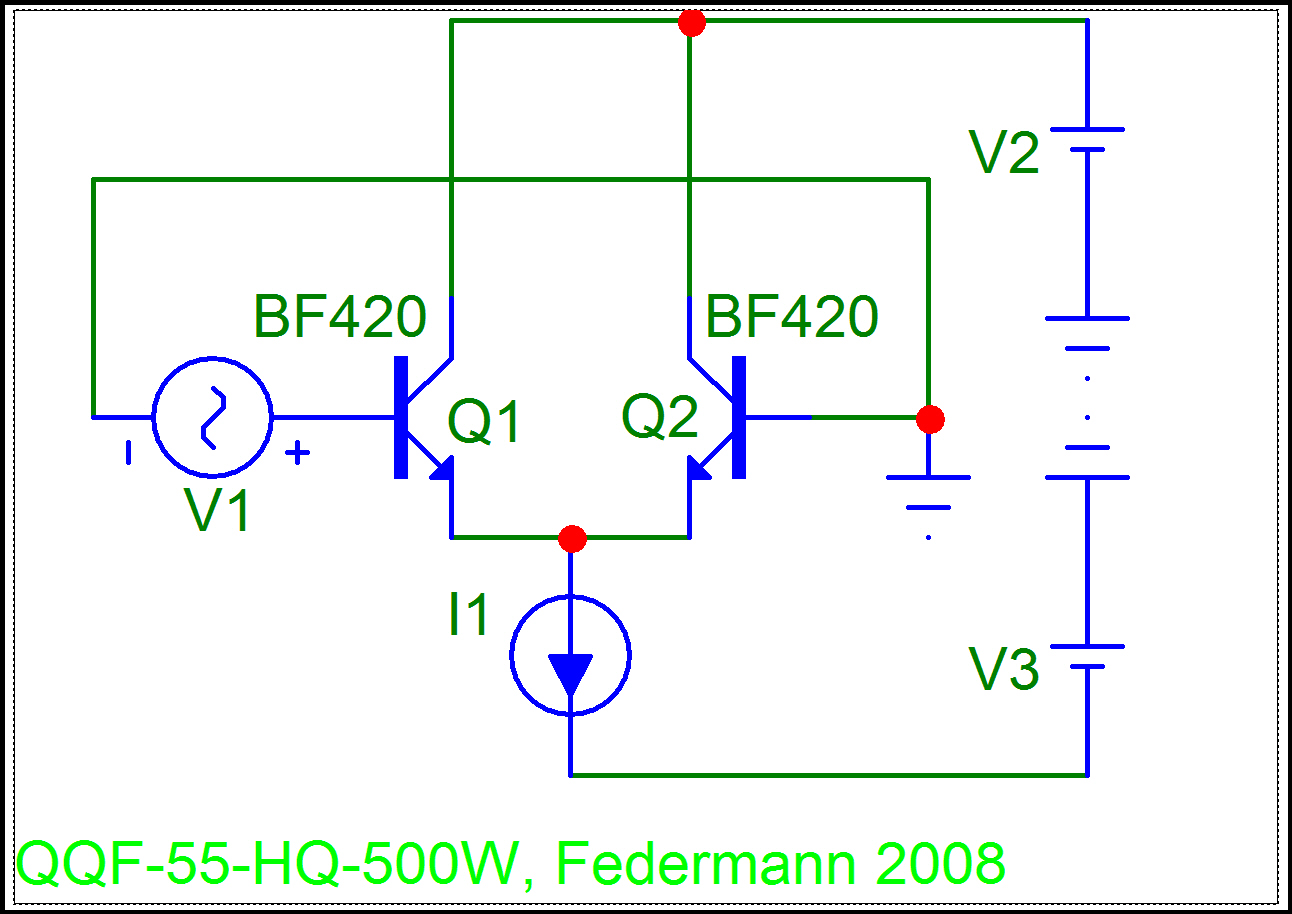
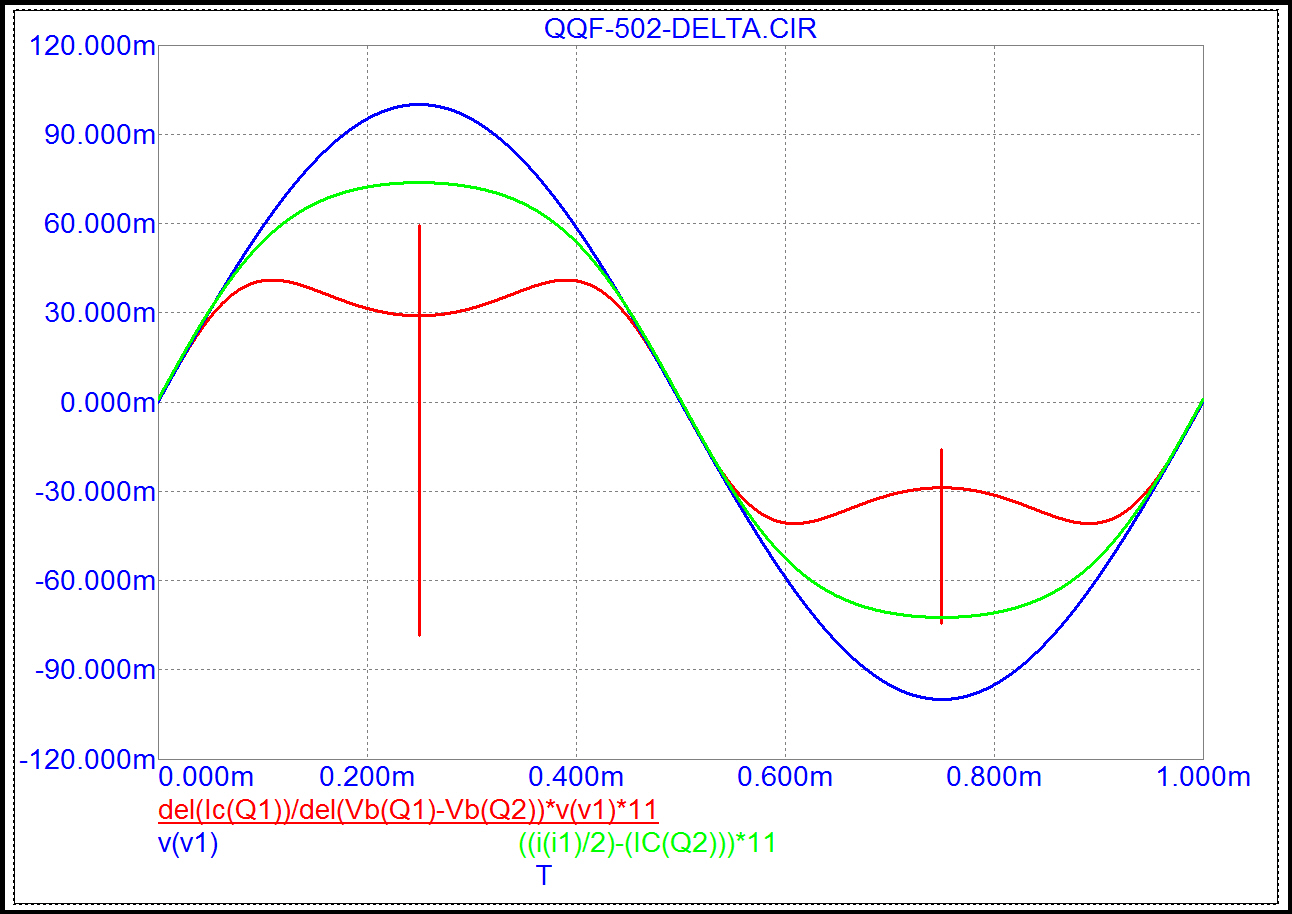
More charts here
- Status
- Not open for further replies.
- Home
- Amplifiers
- Solid State
- Influence of the delay amplifiers for listening characteristics
